Discover the compelling tales of bondwomen in the Bible, where resilience and transformation challenge our perceptions of faith and identity.
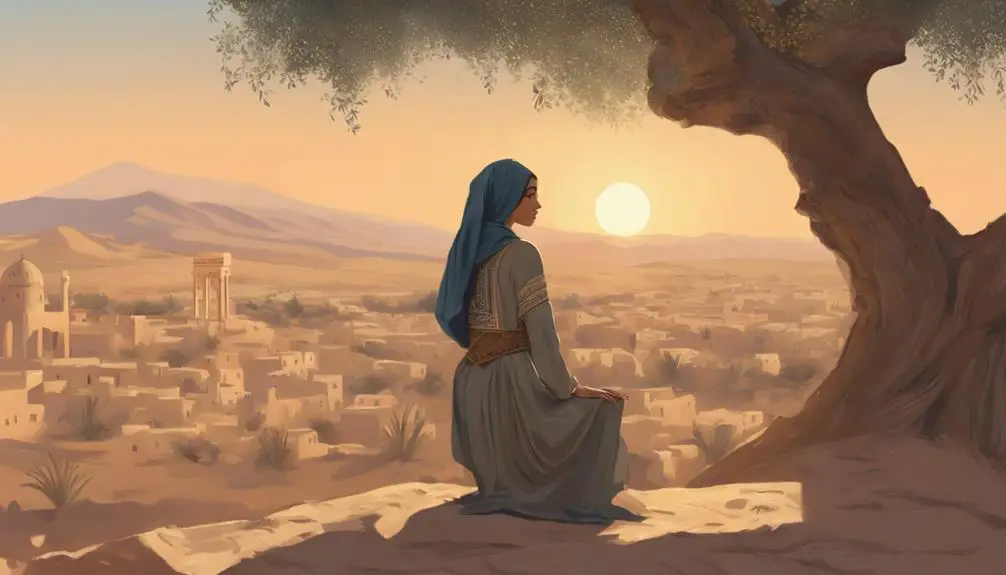
Bondwoman in the Bible
You've likely heard theories about the roles and representations of bondwomen in the Bible, but how much truth lies behind them? From Hagar, the Egyptian maidservant, to Rahab, whose story shifts dramatically from harlot to heroine, these women play pivotal roles that often challenge our modern perceptions of biblical narratives.
Their stories, marked by resilience, defiance, and transformation, invite a deeper understanding of their impact within a historical and theological context. Uncover the layers behind these characters, and you'll find compelling insights into the complexities of faith, survival, and identity in ancient texts.
Key Takeaways
- Bondwomen in the Bible, like Hagar, Zilpah, and Bilhah, embody themes of maternal struggle, surrogacy, and societal duty.
- Their stories highlight complex issues of autonomy, identity, and ethics within biblical narratives.
- These figures often represent marginalized groups, showcasing struggles with power dynamics, bondage, and servitude.
- Despite their challenges, many bondwomen's stories are marked by divine intervention, resilience, and unexpected outcomes.
Hagar: The Egyptian Maidservant
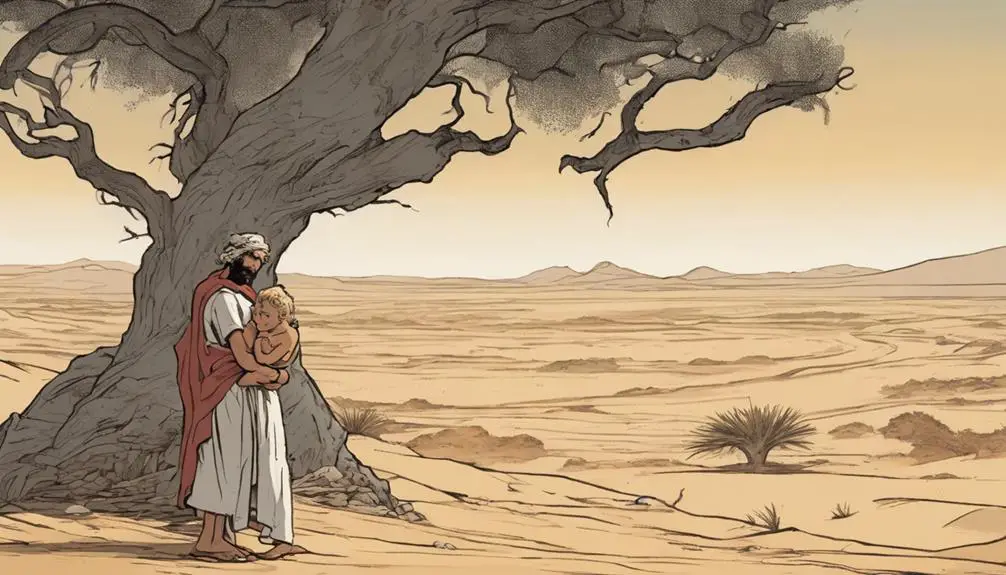
Hagar, an Egyptian maidservant, emerges as a pivotal figure in biblical narratives, embodying themes of struggle, endurance, and divine intervention. Her Egyptian origins aren't merely a footnote but a crucial element that shapes her identity and the dynamics of her story. You're delving into a tale that transcends mere servitude, highlighting the complexities of maternal struggles in a patriarchal framework. Hagar's journey, marked by her status as a foreigner and a bondwoman, reveals the interplay between power, ethnicity, and gender in ancient texts.
Your exploration into Hagar's life uncovers her unique position within Abraham's household. As an Egyptian, she carries the weight of her homeland's storied past, yet she finds herself navigating the challenges of being an outsider in a foreign land. Her maternal struggles are compounded by her servitude, illustrating the double burden borne by bondwomen. You'll notice how her story is a testament to resilience in the face of adversity, as she confronts both the desert's harshness and the complexities of her relationship with Sarah, Abraham's wife.
Through Hagar, you're invited to consider the broader implications of her narrative. Her experiences shed light on the intersection of personal agency and divine will, offering insights into the ways in which marginalized individuals navigate structures of power. Her story, rich in themes of survival and faith, resonates beyond its ancient context, speaking to enduring questions about identity, belonging, and resistance.
Zilpah and Bilhah: Surrogacy in Genesis
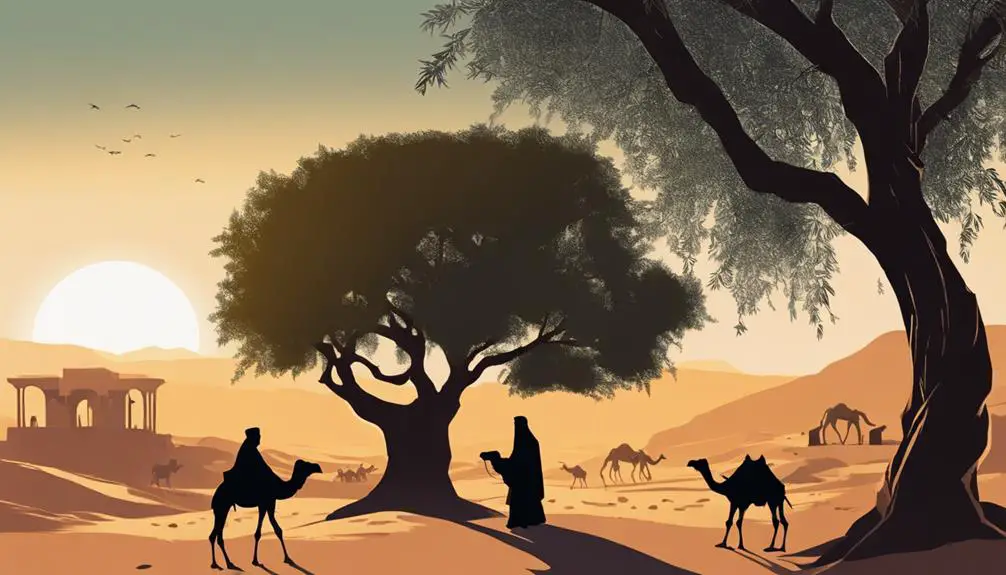
Building on the exploration of Hagar's narrative, Zilpah and Bilhah's stories introduce another dimension to the theme of surrogacy within the complex familial structures depicted in Genesis.
You'll find that their experiences, serving as surrogates for Leah and Rachel respectively, highlight the intricacies of surrogacy ethics and ancient practices. Unlike Hagar, whose story is often discussed in the context of personal agency and divine intervention, Zilpah and Bilhah's narratives delve deeper into the socio-cultural and familial obligations of their time.
You must understand that in these ancient contexts, surrogacy wasn't a matter of personal choice as viewed through today's lens but a social and familial duty, particularly for women who were slaves or servants. The decision for Zilpah and Bilhah to bear children on behalf of Leah and Rachel wasn't theirs to make. This lack of autonomy raises ethical questions about consent and the commodification of women's bodies in ancient societies.
Moreover, the children born from these surrogacies weren't recognized as belonging to Zilpah and Bilhah but to Leah and Rachel, underscoring the complexities surrounding maternal identity and rights in these surrogacy arrangements.
These narratives, thus, invite you to consider the implications of surrogacy practices beyond the biological act, exploring the social, ethical, and familial ramifications inherent in these ancient practices.
The Hebrew Midwives' Defiance
In the narrative of Exodus, the Hebrew midwives' act of defiance emerges as a pivotal instance of resistance against oppressive authority. You witness their civil disobedience as a manifest act of maternal bravery, a moment where the moral compass supersedes the fear of the sovereign's wrath. This act doesn't just challenge the edict but ingeniously subverts it, marking a significant moment of empowerment and autonomy in a patriarchal structure.
The midwives, Shiphrah and Puah, faced with a decree from Pharaoh to kill all newborn Hebrew boys, choose life over death, defying the command. Their bravery isn't just in the act of disobedience but in the risk they bear of severe repercussions. It's a calculated rebellion, fortified by their belief in a higher moral law over human law.
Aspect |
Analysis |
Implication |
|---|---|---|
Action |
Defiance of Pharaoh's decree |
Civil disobedience as a form of resistance |
Motivation |
Protection of innocent lives |
Maternal bravery transcending personal risk |
Consequence |
Survival of Moses, among others |
Direct impact on the deliverance of Israelites |
Risk |
Potential punishment from Pharaoh |
Courage in the face of oppression |
Outcome |
God's favor towards the midwives |
Divine endorsement of ethical resistance |
Through this lens, you appreciate the depth of their defiance, not as mere disobedience but as a foundational act of faith and courage. Their story exemplifies how civil disobedience and maternal bravery can intertwine to challenge and change the course of history, emphasizing the power of individual agency within collective narratives.
The Plight of the Levite's Concubine

Shifting our focus to another narrative of female distress, we examine the harrowing tale of the Levite's concubine, a story that uncovers the complexities of social and personal ethics within a patriarchal society. This narrative, deeply embedded in the fabric of ancient Israelite culture, serves as a poignant reminder of how tribal tensions and societal norms often dictated the fate of individuals, especially women.
In this tale, the Levite's concubine finds herself at the mercy of societal norms that treat women as property rather than individuals with rights and autonomy. Her tragic end highlights not just personal betrayal but also the broader societal acceptance of such acts as a consequence of tribal tensions. This story, therefore, acts as a lens through which to view the stark realities of a patriarchal society, where women's bodies become battlegrounds for male disputes and societal norms dictate their fate with little regard for their well-being.
- Tribal Tensions: The narrative underlines how disputes between tribes exacerbate the vulnerability of women, making them collateral in men's battles for power and honor.
- Societal Norms: It vividly depicts a society where women's lives are secondary to men's honor, showcasing the grim reality of societal norms that sanction violence against women.
- Human Dignity: Through the concubine's plight, the story questions the societal norms that strip individuals of their dignity and rights, urging a reflection on the value of human life within these ancient narratives.
Analyzing the plight of the Levite's concubine not only sheds light on the historical context of biblical narratives but also prompts a critical reflection on how these ancient stories mirror ongoing issues of gender, power, and societal norms.
Rahab: From Harlot to Heroine
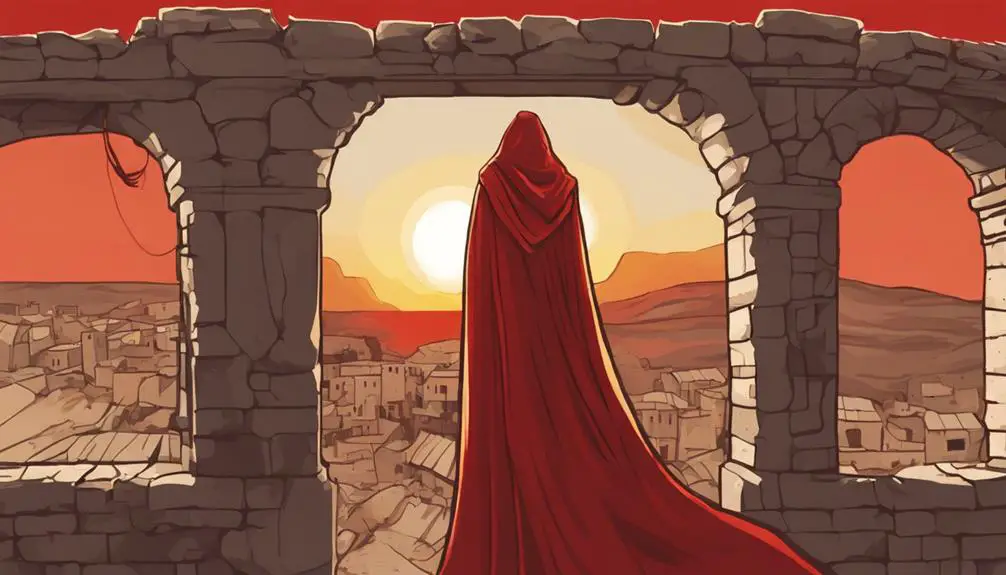
ARTICLE TITLE: Bondwoman in the Bible
CURRENT SUBTOPIC: 'Rahab: From Harlot to Heroine'
Delving into the biblical narrative, we encounter Rahab, a figure whose transformation from harlot to heroine challenges conventional perceptions of morality and redemption within ancient texts. Rahab's faith, exemplified by her actions to hide Israelite spies, marks a pivotal moment in the story of Jericho's fall, showcasing the complexity of her character and the broader themes of faith and redemption in the Bible.
Rahab's story isn't just about a personal transformation; it's a testament to the power of faith and the unexpected ways it can manifest. Her actions, motivated by a belief in the God of Israel, not only ensured her family's survival but also integrated her into the lineage of significant biblical figures, demonstrating the inclusivity of divine grace.
Aspect |
Detail |
Significance |
|---|---|---|
Identity |
Harlot in Jericho |
Challenges societal norms |
Action |
Hid Israelite spies |
Act of faith and defiance |
Outcome |
Saved by Israelites |
Illustrates redemption and grace |
Legacy |
Ancestor of Jesus |
Highlights the inclusivity of faith |
Rahab's narrative forces us to reconsider the boundaries of faith and redemption, illustrating that virtue and righteousness can emerge from the most unexpected places. Her story is a powerful reminder of how faith can lead to salvation, not just on a personal level but also in altering the course of history, as seen in Jericho's fall and her own lineage.
The Unnamed Slave Girl in Acts
Exploring further into the New Testament, we encounter an unnamed slave girl in Acts, whose story sharply contrasts with prevailing themes of agency and voice in biblical narratives. She's possessed by a spirit that enables her to predict the future, a skill her owners exploit for economic gain. This narrative unfolds in Acts 16, where Paul and Silas, while preaching in Philippi, come across her. Her story is pivotal, illustrating themes of divine intervention and economic exploitation within the early Christian community.
- Divine Intervention: The slave girl's liberation from possession through Paul's exorcism is a striking example of divine intervention. It's not just about the miracle but the assertion of spiritual authority over economic exploitation.
- Economic Exploitation: Her owners' reaction to her healing underscores the economic underpinnings of her bondage. The text reveals how her spiritual gift, rather than being celebrated, is commodified, showing the depths of her exploitation.
- Voicelessness and Agency: Despite being central to the story, she remains unnamed and her voice unheard post-deliverance. This silence speaks volumes about the status of enslaved individuals and women in ancient societies.
Analytically, her story serves as a critical lens through which we can examine the complexities of early Christian narratives. It juxtaposes the miraculous against the mundane realities of economic exploitation, challenging us to consider the multifaceted nature of divine intervention. Furthermore, it highlights the systemic injustices that can silence the most vulnerable, urging a reflection on whose voices are amplified and whose are suppressed in religious texts.
Frequently Asked Questions
How Did the Status and Rights of Bondwomen in Biblical Times Compare to Those of Free Women and Men Within the Same Society?
In ancient times, your status and rights significantly depended on your societal position. Compared to free women and men, your access to property laws and engagement in marriage practices was restricted. As a bondwoman, you'd find your autonomy limited, often seen more as property than as an individual with rights.
Free individuals enjoyed broader legal protections and social freedoms, highlighting a stark contrast in the lived experiences within the same society.
What Role Did Cultural and Religious Norms Play in Shaping the Treatment and Perception of Bondwomen in Biblical Narratives?
You're delving into how deeply cultural and religious norms influenced perceptions and treatments of individuals based on gender dynamics and legal frameworks.
These norms didn't just dictate behavior; they shaped the very essence of societal roles. In biblical narratives, such frameworks were pivotal, highlighting stark contrasts in the treatment of different groups.
It's a testament to the power of cultural and religious beliefs in molding the social fabric and individual identities.
Can Any Parallels Be Drawn Between the Experiences of Bondwomen in the Bible and the Experiences of Enslaved or Indentured Women in Other Historical Contexts or Societies?
You can certainly draw parallels between the experiences of enslaved or indentured women in various historical contexts and others. Legal parallels often highlight similar treatments and rights—or lack thereof—across different societies.
Societal acceptance, too, plays a critical role in shaping these experiences. By analyzing these aspects, you'll uncover how cultural and legal norms across times and places have influenced the perception and treatment of women in these vulnerable positions.
How Have Interpretations of the Stories of Bondwomen in the Bible Evolved in Modern Theological and Feminist Discussions?
In modern theological and feminist discussions, interpretations of stories have evolved significantly. You'll find that gender hermeneutics play a crucial role, offering new insights into traditional narratives.
These discussions often focus on themes of spiritual liberation, examining how these stories can inform contemporary understandings of gender and freedom. Scholars and activists alike delve into these texts, seeking ways to reinterpret them for today's context, advocating for equality and justice.
Are There Instances Where Bondwomen in the Bible Exercised Agency or Influence Beyond Their Societal Status, Not Covered in the Stories of Hagar, Zilpah, Bilhah, the Hebrew Midwives, the Levite's Concubine, Rahab, and the Unnamed Slave Girl in Acts?
You're exploring how individuals in subordinate positions have navigated their circumstances to exert influence or autonomy, a fascinating subject.
Focusing on historical narratives, it's clear that figures often perceived as merely background characters can, and do, shape events significantly.
This inquiry into bondwoman autonomy and influential servitude seeks to uncover lesser-known examples of such dynamics.
It's a deep dive into the nuances of power and agency within structured limitations.
Conclusion
In your journey through the biblical narrative, you've encountered the tales of bondwomen, each threading a delicate pattern of resilience and transformation. Like the Phoenix rising from ashes, these women, from Hagar to the unnamed slave girl in Acts, transformed their bondage into beacons of hope and defiance.
Their stories aren't mere footnotes but pivotal chapters in the biblical saga, showcasing the strength found in the most unlikely places. Their legacies, echoing through ages, remind us that liberation often sprouts from the depths of oppression.

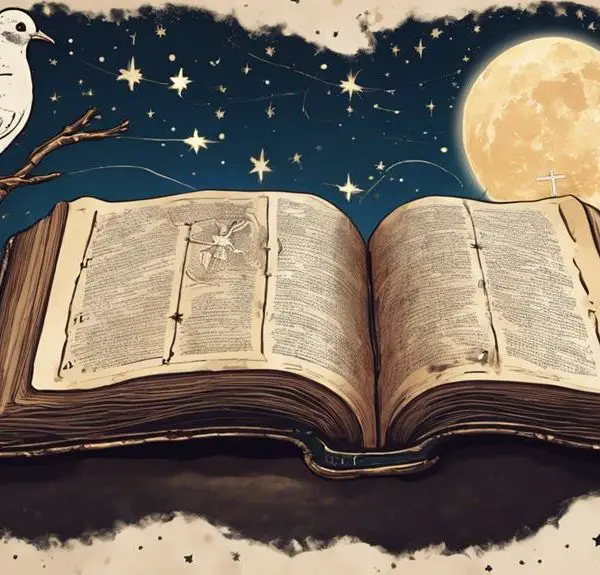
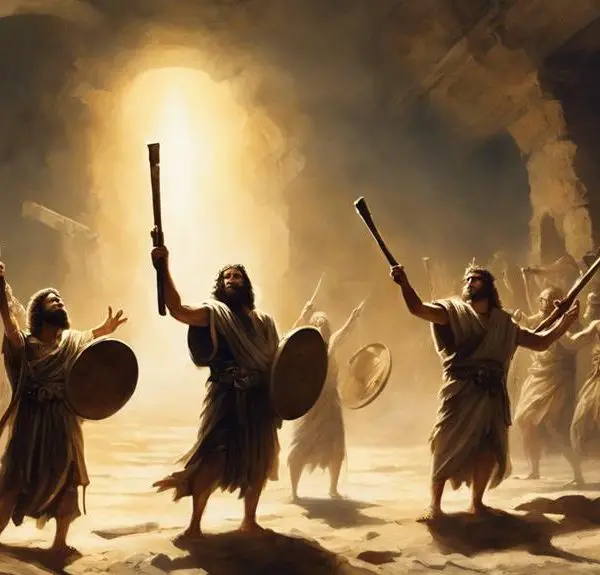
Sign up